Hip pain in the FABER Test? You need to know THIS.
Dec 02, 2024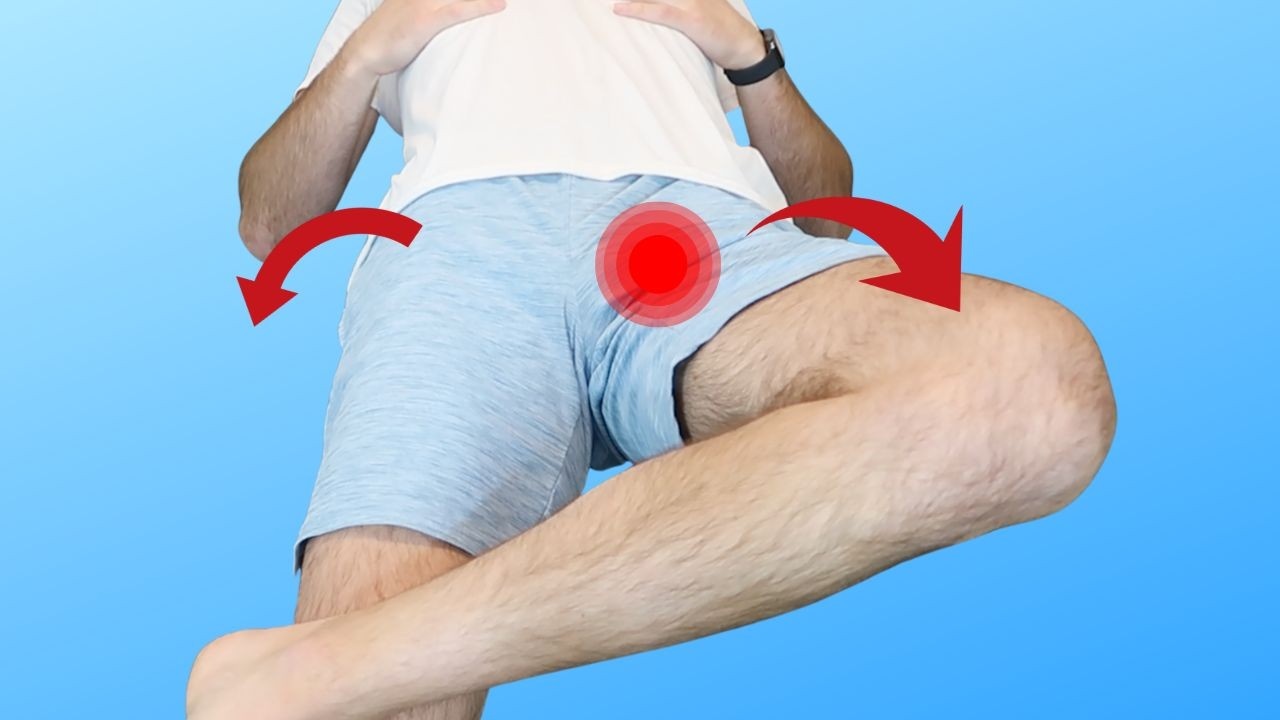
Have you received a positive FABER test? You experienced pain in this position so now what? What does this mean?
Maybe you were even referred to a surgeon to get an MRI or X-ray.
Some of you may have already received a diagnosis for FAI, hip labral tear, trochanteric bursitis or some other common diagnosis for hip pain.
Regardless of where you currently are in your journey, this article will help you. I will tell you all you need to know about the FABER test and why you should not fear getting pain in this position.
Why trust me on the FABER Test topic?
Why trust me? Well first of all, you don't have to. My goal with articles like this is to share truthful information about hip pain and pathologies.
There is so much misinformation out there. One of my life's goals is to level out all of the misleading content out there about chronic joint pain. If I convince you, that's a plus! But I'm already satisfied by getting this message on the internet.
Secondly, I was where you were. 10 years ago, I suffered from debilitating chronic hip pain. I was poked and prodded by many medical professionals. And of course, one of the tests I received was the FABER test.
Back then, I knew much less. I was convinced that hip pain in this position meant there was something terribly wrong in my hip joint. And when I got an MRI and X-ray that showed a hip labral tear and FAI, I was even more convinced.
But after dedicating the last decade of my life to learning as much about hips and movement as I can, I now know how wrong I was. Pain in the FABER position means there is lack of function in this position. That's it.
The pain is not because of the impingement. It is not because of the hip labral tear. It is not because of bursitis or any other condition. It is because your hips lacks the ability to "flex, abduct and externally rotate." I'll come back to this point later because it is very important.
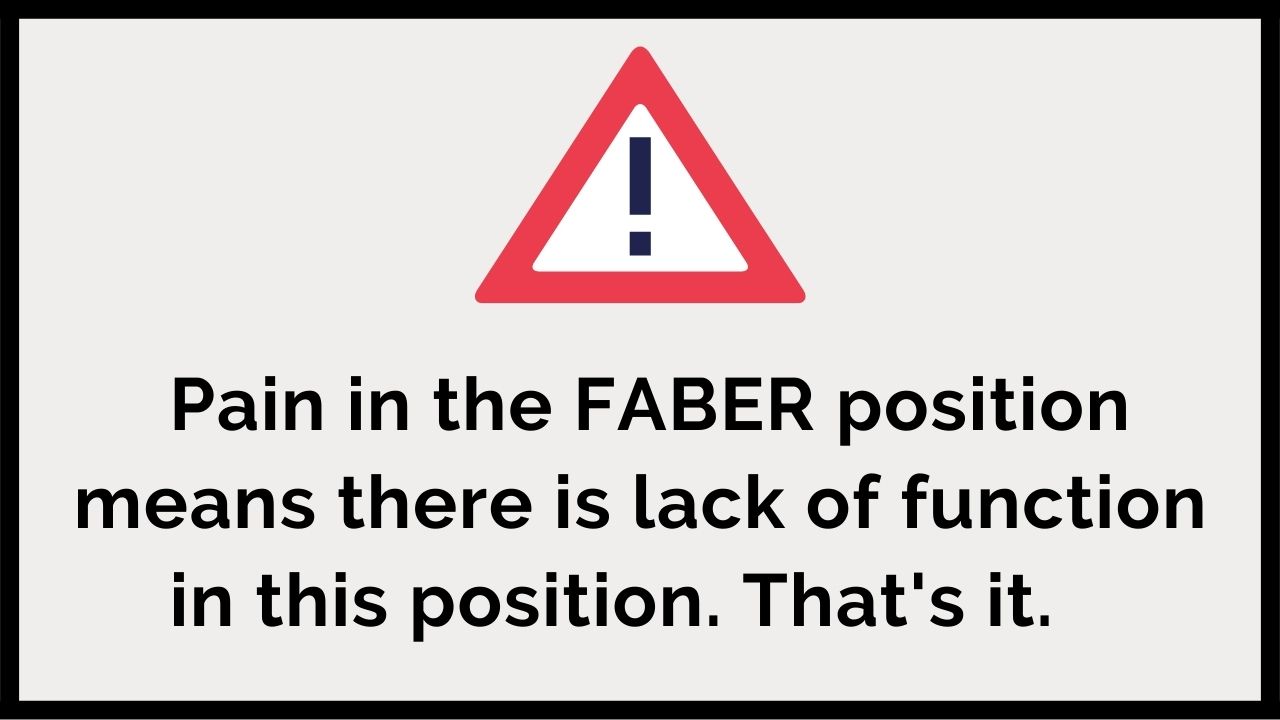
The third and final reason of why you should trust me is because I help hundreds of people in hip pain every year. Many of these people have pain in the FABER position. And after working on their movement function, their pain levels reduce. Not only in the FABER position but in daily life.
This is the meat of this article. You can change how the FABER position feels. It is not something that needs to be surgically fixed or treated with injections.
Hopefully, I gave you enough reason to trust me. To ensure we're all on the same page, let us summarize what the FABER test is before we move to more nuanced topics.
What is a FABER test?
FABER stands for Flexion, Abduction and External Rotation. It is also sometimes referred to as the Patrick's FABER test.
In the FABER test, the patient lies in a supine position (on their backs). From there, the tested hip is placed in a modified figure-four position. The ankle is placed on the opposite knee. The practitioner then pushes the tested knee down while simultaneously pushing the non-tested hip down.
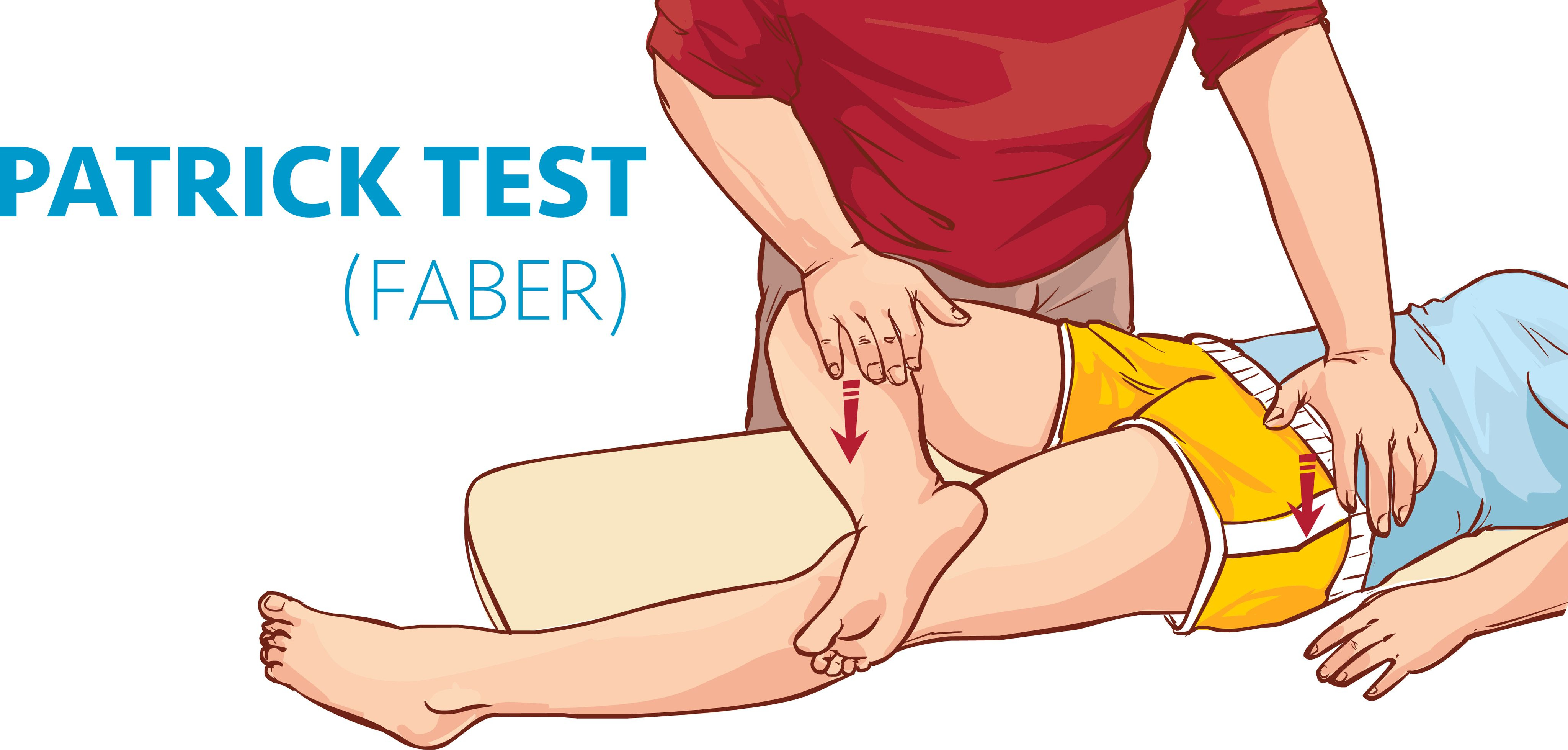
The tested hip is now in a flexed, abducted and externally rotated position. The external force placed by the practitioner places the hip into a deeper position.
Now that we know what the FABER test is, let's examine what it is used for.
What is the faber test used to assess?
The FABER test is used to assess potential joint damage in the hips, sacroiliac joint and low back. Source 1. Source 2.
The majority view is the following: if this test reproduces the patient's pain pattern then there is likely damage in one of the above mentioned joints.
If pain is present in the FABER test, it is recommended that the patient receive further imaging like MRIs or X-Rays. Source 3.
This is where the problem begins. Before receiving any imaging, we are dealing with a simple issue. Pain is present in a relatively awkward position. A position that most people likely don't get into on a daily basis.
If I asked an industrialized human to get into a deep squat or a back bridge, most people would likely experience some pain as well.

But then we get an X-Ray showing hip impingement. Or an MRI showing a labral tear. Our pain is no longer simple. It becomes complex. We no longer feel some pain in an uncomfortable position. We now have a serious medical issue that needs medical attention.
There is only one issue though. There is no clear evidence that hip impingement or labral tears cause hip pain. In fact, there is a growing and overwhelming body of research that these "pathologies" are normal.
Many people walk around their entire lives with hip impingement and/or hip labral tears WITHOUT any pain. Here are some studies for you to digest:
- 72% of 110 asymptomatic hips had signs of FAI.
- 69% of study participants with no history of hip pain had hip labral tears.
- 57% of asymptomatic volunteers had hip labral tears.
- 25% of men had hip impingement but no hip pain.
What does this tell us? It tell us that MRIs and X-rays are not a helpful diagnostic. Getting a scary diagnosis like FAI or a Hip Labral Tear does not mean you need to go under the knife.
For many people, the biggest obstacle is a psychological one. Once you get a diagnosis, it's hard to shake it off. There is a false belief that you are "broken" and need to be "fixed."
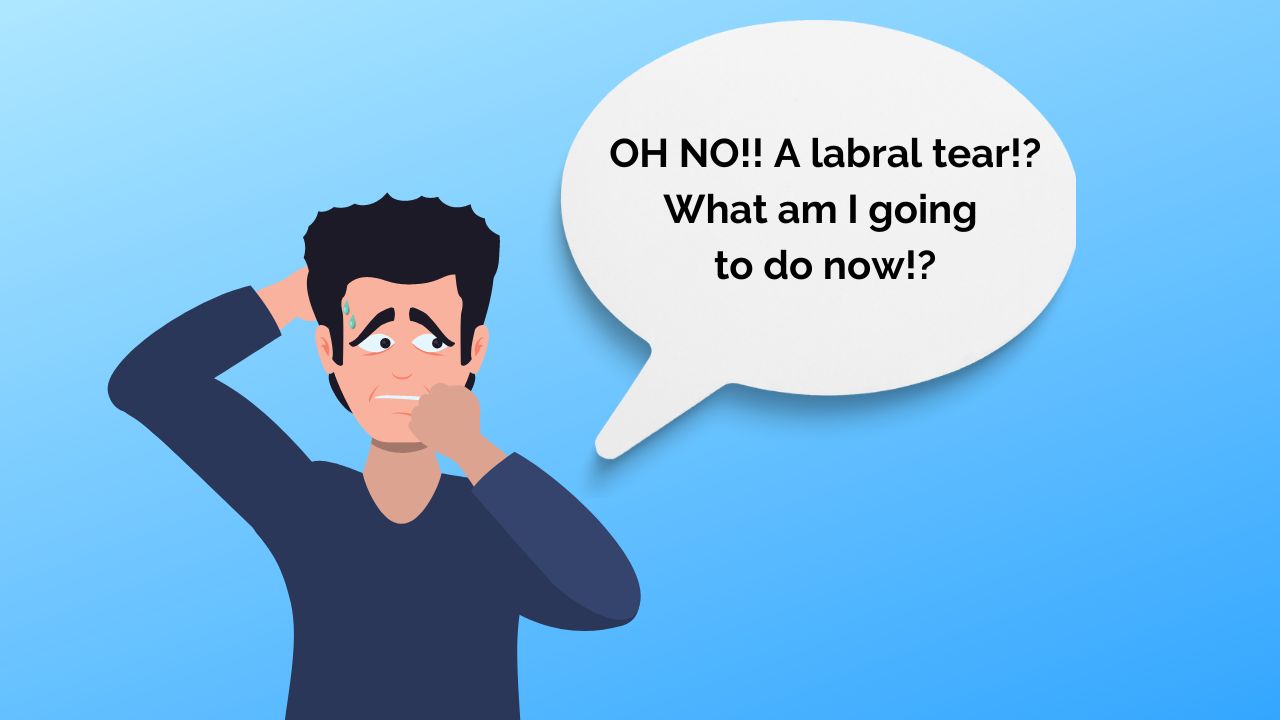
This is why I recommend keeping it simple. Instead of focusing on a diagnosis we have no control over, let's focus on something we can control. The pain in the FABER position. What does pain in this position mean and what can we learn from it?
What does a positive FABER test mean?
We learned what the FABER test is and what it's used for. We also learned that getting an MRI or X-ray from a positive FABER can be counter-productive. But what can we learn if we experience pain in the FABER position?
We learn that our hips cannot handle that much flexion, abduction and external rotation. And in order to improve these positions, we need a gentle and safe way to practice them.
This is the heart of corrective exercise and a comprehensive movement practice. We identify what our movement limitations are and then we progressively work on them.
Most people in hip pain don't have functional and balanced hips. In the FABER test, our hips are being placed in a challenging position. Not only that but we have an external force pushing us DEEPER into this position.
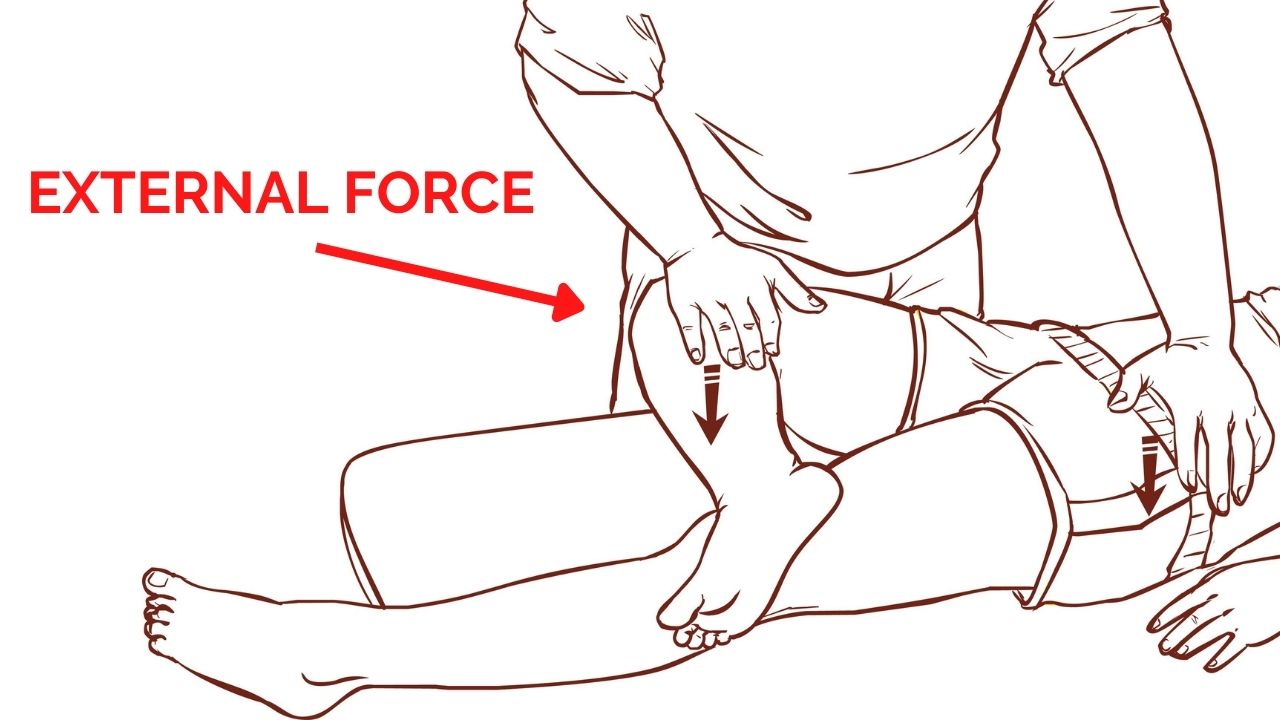
Of course this is going to hurt! What if I asked you to try to get into a front split? You tried your hardest but of course, you still have a ways to go. You stop where you feel an enormous and painful stretch.
I then come by and push you DEEPER into a split. Do you think that will hurt? I wouldn't want anyone doing that to me, that's for sure.

The same thing is happening in the FABER test on a less obvious level. Your hips cannot access a range of motion without pain. And then an external source forcefully pushes your joints, muscles, ligaments and tendons deeper into this position.
We then conclude that there might be something terribly wrong in your hips, low back or sacroiliac joints. But in reality, your body simply isn't capable of accessing this range of motion without pain.
The nervous system is sending a message. But this message does not mean something is terribly wrong. We must respect pain but not fear it.
So what can we do about it? Well, we can improve this position in a gentle and safe way. And there is one exercise in particular that targets this position beautifully.
Exercise to Improve FABER Position
Below, you'll find the hip twist exercise. This is one my favorite exercises to improve all three positions tested in the FABER position.
It targets flexion, abduction and external rotation. It is also safe, gentle and almost anybody should be able to perform it. The beauty of this exercise is that it helps untangle the pelvis from the hip.
For many, the reason the FABER test position is uncomfortable is because of how the pelvis functions in relation to the hip. The hip twist improves how the the pelvis and hip function together.
Here are some programming recommendations for this exercise:
- Pay attention to whether one side feels different than the other. This can tell you a lot about what types of imbalances exist in your hips and pelvis.
- Perform 2-3 times a week at minimum to really get the most value.
- Spend at least 2 minutes on each side but you can spend even more time if it feels good.
Closing Thoughts on the FABER Test
It is so easy to get sucked into a bad place after getting pain in the FABER test. The conventional path is to get MRIs and X-rays if pain is experienced in this position.
But this can only delay our path to healing even further. We run the risk of receiving a diagnosis that we may over identify with. This will not help us get out of chronic hip pain.
Untangling these false beliefs is challenging. But the good news is that you have your own body to show you there is an alternative and more reasonable path.
Do the hip twist exercise for a few weeks and then see how the FABER position feels. If you even see a little bit of improvement, imagine how you would feel with a daily comprehensive movement practice.


